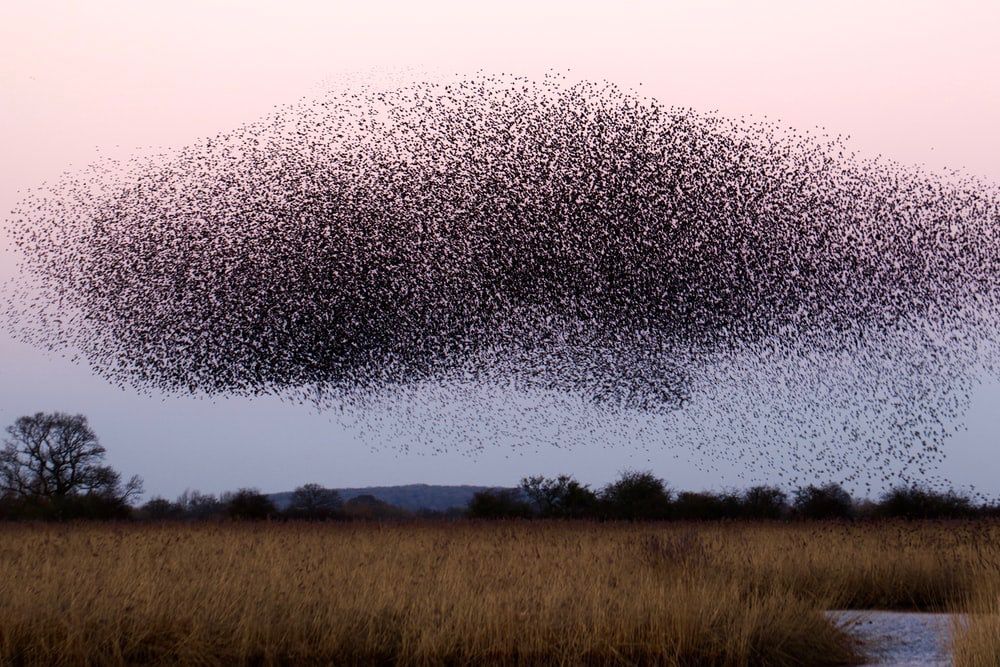Coordination

The European starling also possesses the ability to form clouds of the pesky and poetic nature, the latter of which are called murmurations. Sometimes starlings are desired for waxing to and upon. Mozart taught the opening melody of the third movement of Piano Concerto no. 17 in G major to his pet Vogelstar. Spellbound by a flock flying at dawn over wintry fields, Coleridge could not help but describe the morphing shape in real time, “thickening, deepening, blackening.” With such numbers flying in flux over countrysides and city skies, one would think starling-to-starling collisions would be a frequent tragedy. But it turns out that each bird’s brain only needs to heed three basic rules to keep safe while creating one of nature’s most transcendent displays:
Keep up with its seven closest cousins.
Give each other a body length or so of space.
Always veer right if another approaches head-on.
Reading Isaac Yeun’s essay about schooling and shoaling today, I marvel at the simplicity of coordination in nature. Is this coordination hardwired, that is, encoded genetically? Or is this learned behavior? Does dissent happen?
So obviously, as human, I consider the human population and the much too common lament about challenges in coordination. And I wonder, really, if it is a matter of our tendencies to place language on too high a pedestal above everything else. If coordination is a matter of acting — of behavior, of bodily conduct, of doing what we say we will do — then should there be any confusion about what is to be done should we all seem to agree? We would, worst case scenario, have the dance be a little bit tripped up when someone mistakes say left for right, but other than that, should we all agree, wouldn’t it be a somewhat smooth flight? We get too caught up in metaphors and definitions…you know what i’m saying?